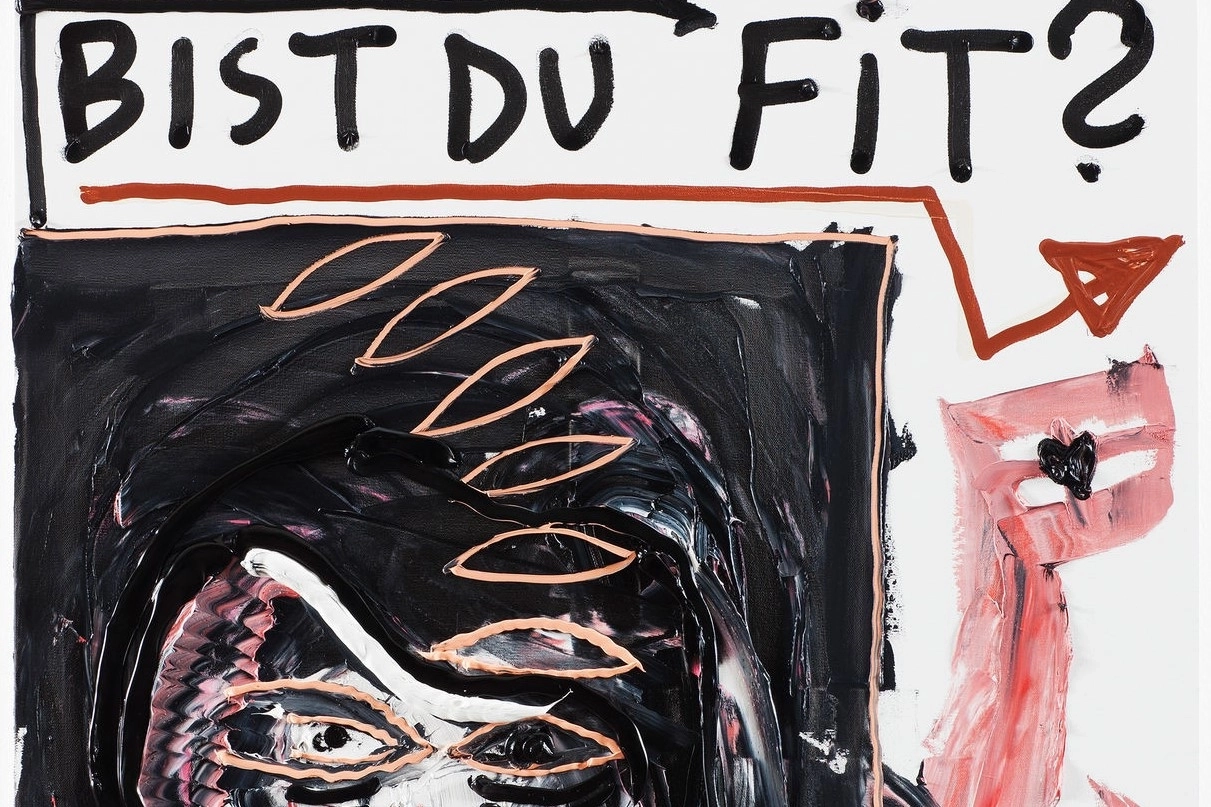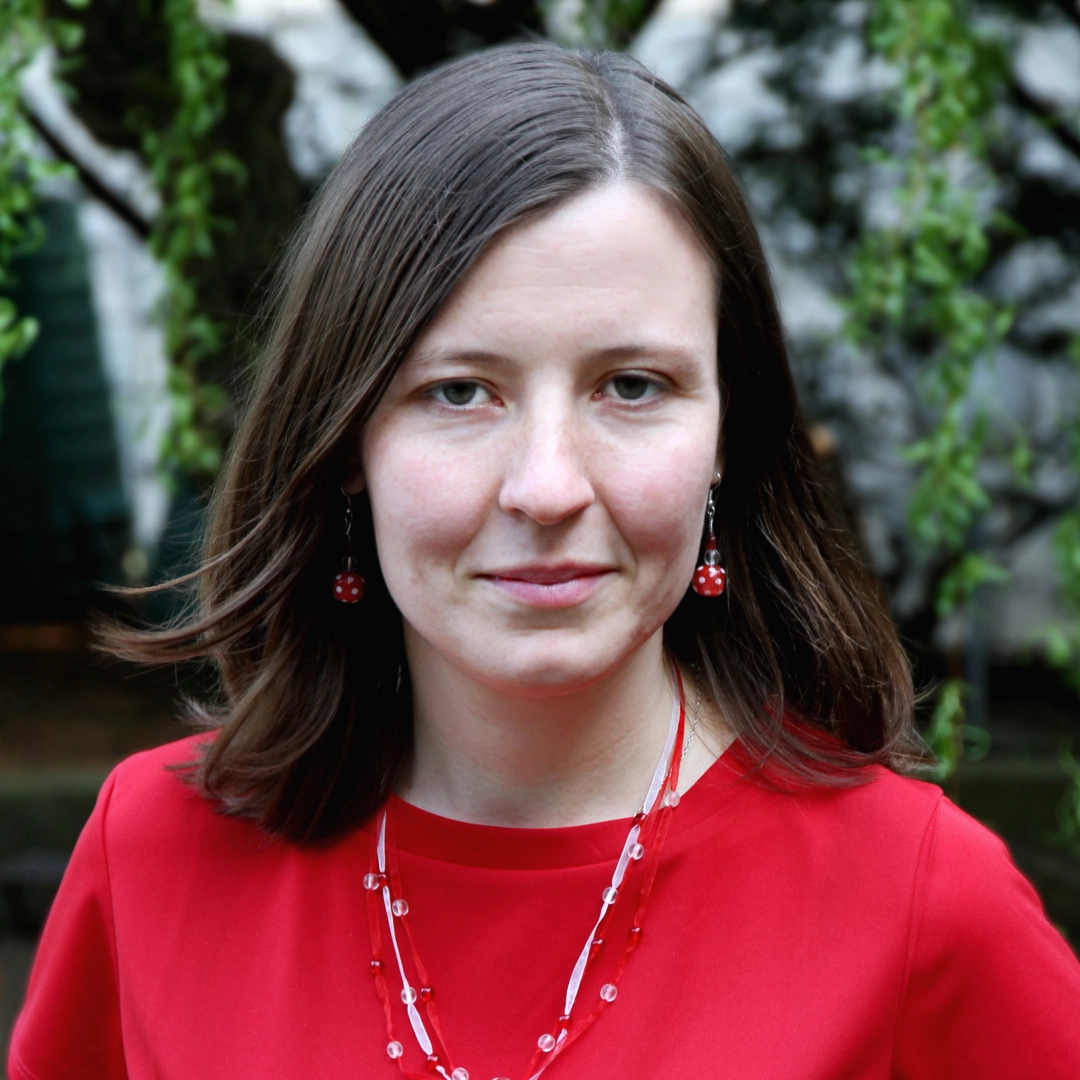Sport has come into the spotlight also of provocative artist Jonathan Meese. The Japanese-born German paints, creates sculptures, installations, and shocking performances, and also works as a stage designer and theatre director. Meese dives into controversial aspects of German political history and doesn't shy away from the use of ideological symbols which are taboo in contemporary society. The artist, who also exhibited at the National Gallery in Prague, became widely known when the actors in one of his performances chanted "Sieg Heil".
.jpg)
Not even sports evaded his critical perspective; instead of muscular athletic bodies Meese depicts contorted figures, some of which the viewer has to rather deduce than recognize. His wide-stroked vivid paintings, completed with written text and various symbols, are both funny and disturbing at the same time. In accordance with the concept of art as a game, his paintings evoke aesthetics and imagination of children's drawings.
Exhibition in Vienna showcases aluminum athletes and seductive ballerinas
For the exhibition DR. NO SPORTARZAHN (EVOLUTIONSSCHRITT DE FIT) at Krinzinger Galerie in Vienna, which was completely devoted to the theme of sports, he complemented these noticable canvases by a series of aluminium statues refering to the classical Olympic athletics events such as discus or hurdle jumping. However, these athletes captured midst absurd movements don’t look exactly stable. The statues are tilting in various ways and seem to fall apart at any moment.
.jpg)
His drawings from 2010 then focused on dance, specifically ballet. Not even these monstrous ballerinas are looking too graceful and their depiction invokes more fear than a sense of beauty. In this series of ballet drawings, Meese addresses the power of seduction as part of the play with the body, where eroticism is created by the movement of the dancers' bodies soaring across space.
Meese sees sport as a game
In general, Meese's take on sport can be seen as criticism of our society's obsession with professional athletes and the seriousness we associate with sports. The artist questions both the concept of competing and its broader political context, as well as the ideal of an athletic body.

On the other hand, his paintings emphasize the playfulness of sports as such. Same as art, it doesn't have to be anything else than the embodiment of children's games. For him, sport in it’s essence is a game and includes diverse physical activity, even in a sexual context.
The dictatorship of art and portrayal of dictators
Jonathan Meese's formally very diverse work stems from the idea of art being a counter world; he explores revolution and ideology and promotes the so-called Dictatorship of Art. "Art is the best ruling power. The dictatorship of art is ideal, and that’s why art has to come into power," he says.
Over time, he developed an extensive personal mythology with characters inspired by history, legends, and sci-fi. refering to e.g., Stalin, Richard Wagner or John Wayne. With his political-ideological statements and artistic provocations, Meese sometimes balances at the edge of the law.

Yet his approach to painting is very playfully. His canvases have a seemingly slapdash and flashy looks. Meese applies acrylic paints on his canvases directly from the tube and often combines them with other materials, found objects or photographs. He frequently complements his painting with written text, sometimes in the style of graffiti or political manifestos. He often expresses himself in his own, difficult-to-translate German and English neologisms, too.
Meese provokes also as a director and set designer
Meese is not only a painter or drawer; he also creates sculptures, installations, and performances. In addition to that, he designs stage sets and writes and directs theater plays and operas. It was one of his original plays titled Generaltanz den Erzschiller staged at the National Theatre in Mannheim in 2013 in which he incorporated the Sieg Heil salute, swastikas, and other Nazi symbols. Since in Germany any Nazi manifestations are illegal, he ended up in court and while simultaneously receiving lots of attention from the world media. He then defended himself by claiming it was a satirical artistic gesture, and he was eventually acquitted of the charges.

Jonathan Meese was born in Tokyo in 1970 to a German mother and a Welsh father. He soon moved to Germany, where he studied at the Hochschule für bildende Künste in Hamburg, where he still lives today. He received his first great acclamation only with his exhibition Ahoi der Angst at the Berlin Biennale in 1998, which celebrated various heroes and antiheroes of the world history, mythology, film and pop culture.
The world-renowned artist also exhibited in Prague
Since then his exhibitions were installed in many major galleries such as Tate Modern in London, P.S.1. in New York City, Pinakothek der Moderne Kestner in Munich, Gesellschaft in Hanover, Museum der Moderne in Salzburg, Deichtorhallen in Hamburg, Magasin in Grenoble or Gemeentemuseum in The Hague. His works are in the possession of many important institutions, including the Centre Pompidou in Paris and the Saatchi Gallery in London.

Meese also exhibited at the National Gallery in Prague in 2015, where he opened the exhibition Artists and prophets. Schiele, Hundertwasser, Kupka, Beuys and Others with a performance in which he conversed with the featured prophets from the backstage. Alongside with that he presented a set of canvases My Über Daddys which also refer to the work and influence of the prophets.







